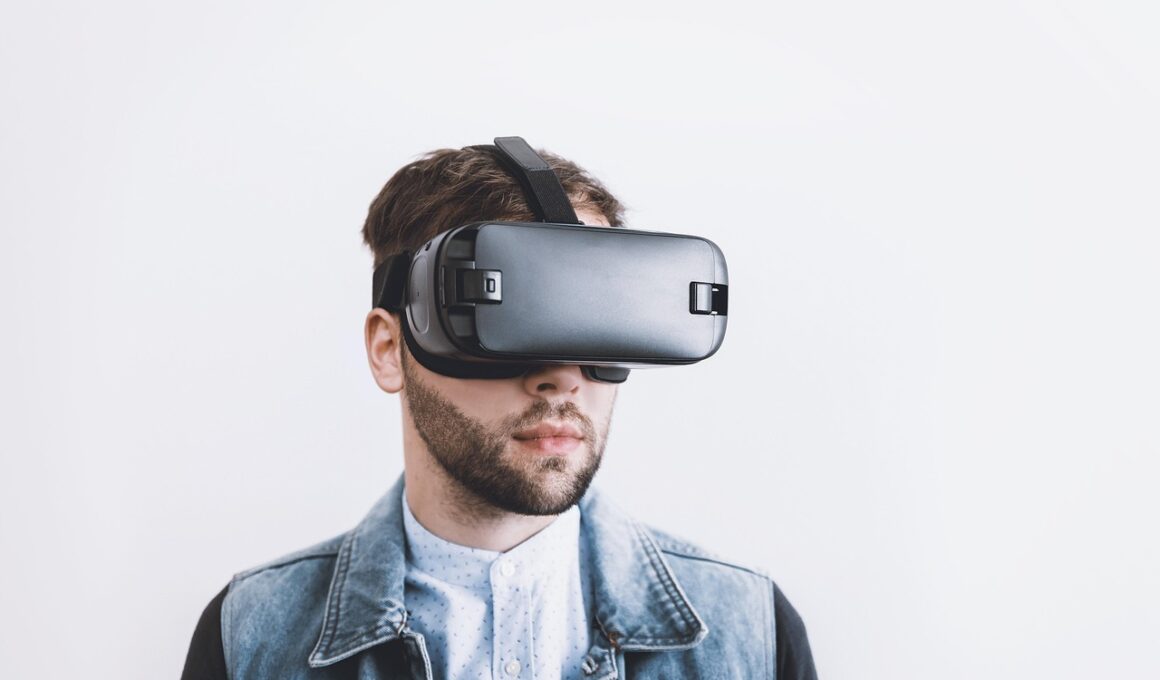The Use of Virtual Reality in Social Media: User Experience Challenges
As virtual reality (VR) integrates into social media, users face a range of experience challenges. One major issue is accessibility; many users lack the required hardware to fully experience VR environments. This deficiency restricts engagement and participation within these digital spaces. Additionally, users accustomed to traditional platforms may struggle to adapt to the immersive nature of VR. The learning curve associated with navigating new social paradigms can deter users from exploring these technologies. A significant concern is user comfort and safety as VR can cause motion sickness or disorientation. Such adverse reactions hinder user retention on platforms embracing VR innovations. Furthermore, social interactions in VR can feel isolating due to physical separation from peers, impacting interpersonal relationships. Without adequate support systems, users might feel overwhelmed or disconnected. Privacy and data security are also critical challenges; immersive environments often collect extensive data, raising concerns over user tracking and behavior monitoring. Users may hesitate to share personal data in unknown VR spaces, further limiting engagement. To address issues surrounding user experience, developers must prioritize intuitive interfaces, robust support, and clear privacy protocols while considering users’ needs in VR social media.
User adaptability is crucial in maximizing VR’s potential within social media. A seamless transition from traditional to VR platforms must occur for a smooth experience. Developers can facilitate user adjustments by creating tutorials and interactive guides, explaining unique features and functionalities. Users often rely on peer recommendations when transitioning to new technologies, so fostering community engagement and support can be beneficial. Encouraging early adopters to share tips and experiences can demystify the VR experience. Another aspect to consider is the importance of social interaction and user agency within VR environments. It is crucial to ensure that users have control over their experiences and interactions, promoting agency and personalization. Features like customizable avatars or tailored social spaces can enhance user satisfaction and loyalty. Moreover, developers should acknowledge and address the differences in user preferences across demographic groups. Younger users may acclimate quickly to VR, while older generations may require more assistance. By catering to various levels of tech-savviness, platforms can enhance the overall experience, making VR social media inclusive and engaging for everyone. Increasing awareness of adaptive solutions will help bridge the gap for users facing technological barriers.
Social Interaction Dynamics
In the realm of social media, interaction dynamics significantly shape user experiences. Virtual reality introduces a new dimension to these interactions, allowing for immersive communication. However, these interactions present their unique challenges. One major challenge involves the representation of emotions and non-verbal cues. Unlike face-to-face interactions, users may find it difficult to convey emotions effectively in VR environments. Emotions communicated through facial expressions or body language may be lost, leading to miscommunication and a lack of connection. Moreover, virtual avatars often fail to capture the nuances of human expressions, limiting empathetic exchanges. Users may also find the functionalities provided for interaction insufficient; many VR platforms currently offer basic communication tools that do not cater to nuanced dialogues. Developers should address these limitations by incorporating a broader range of interaction options, such as voice modulation or gesture recognition. Additionally, fostering communication through diverse social environments is essential. Creating casual and formal areas within these virtual spaces allows users to navigate their interactions according to their comfort levels. The success of VR social media will rely on balancing immersive experiences with effective communication, ensuring users can connect authentically in these digital realms.
User experience in virtual reality social media is further complicated by technical issues. Lagging connections, poor graphics, and equipment malfunctions can severely impair a user’s ability to engage with the platform. Many users may abandon platforms that exhibit regular technical disruptions, leading to decreased user retention rates. Developers must invest in high-quality infrastructure to ensure a smooth experience for users. Frame rate optimization and minimizing latency can significantly improve user satisfaction, making the platform more enjoyable. Additionally, user experience can be affected by the learning curve associated with new technologies. Many users may experience frustration when operating VR devices for the first time, impacting their initial impressions of a platform. Therefore, providing support in the form of forums, FAQs, and responsive customer service can enhance overall user experience. Enhancing collaborative features also plays a vital role in social interactions. Allowing users to have simultaneous or group experiences can strengthen social bonds and create a sense of community. Providing easy-to-use tools for creating shared experiences ensures that users can engage meaningfully with friends, enhancing both their satisfaction and commitment to the platform.
Gamification and Engagement
To tackle the challenges presented by virtual reality in social media, gamification can be a powerful tool. Implementing game-like elements encourages active engagement and makes navigating these environments more enjoyable. Users are often more willing to explore platforms that offer rewards, challenges, or achievements. By introducing a point system or leveling mechanics within the VR social experience, users can feel motivated to engage more deeply with the platform. Additionally, incorporating fun activities and interactive content enhances user interaction. Hosting events, competitions, or collaborative challenges fosters community, making users feel valued and connected. However, careful consideration must be given to the balance between fun and functionality; excessive gamification may distract users from meaningful interactions. Developers should prioritize features that enhance social exchanges while integrating engaging gamified elements. Moreover, analytics can be employed to monitor user behavior and preferences. By tailoring gamified experiences to user interests, platforms can create a more personalized journey, enhancing emotional investment. Ultimately, gamifying VR social media platforms effectively allows developers to heighten user engagement while addressing many existing experience challenges.
Looking ahead, the future of social media also poses numerous questions regarding long-term user experience in virtual reality. As technology continues to evolve, the methods of communication, interaction, and community-building in VR will advance as well. Understanding these changes will be essential for developers to remain relevant in the ever-changing social landscape. Emerging technologies, such as haptic feedback or neural interfaces, may transform user experiences, further immersing them into social interactions. Moreover, the role of artificial intelligence in enhancing user suggestions and experiences cannot be underestimated. AI algorithms can analyze user behavior to recommend tailored interactions, improving satisfaction and engagement. However, with these advancements come questions of ethical responsibility in how data is collected and utilized. Developers must strike a balance between personalization and user privacy to maintain trust and encourage participation. Furthermore, addressing inclusivity in VR social media platforms is paramount. A diverse user base should be prioritized when designing experiences, ensuring that all individuals feel welcomed and represented. By forging a path toward responsible, inclusive, and engaging VR social experiences, developers can significantly enhance the quality of interactions among users in their virtual communities.
Conclusion
In conclusion, navigating the user experience challenges presented by virtual reality in social media is paramount for developers. To create engaging, user-friendly platforms, they must prioritize accessibility, social interaction dynamics, and technical stability. Encouraging user adaptability through personalized experiences and structured guidance can help ease the transition from traditional platforms to immersive spaces. Additionally, gamifying experiences allows for increased engagement, while understanding user preferences ensures relevant interactions. As technology evolves, developers must continue to explore emerging trends such as AI recommendations and haptic feedback to enhance interactions. Balancing between personalization and ethical data usage will be vital in building trust among users. Inclusivity remains a crucial aspect of developing VR social media spaces that cater to diverse users. By addressing these challenges and actively working to enhance user experiences, developers can create virtual communities that foster authentic connections and enrich user engagement.
Ultimately, the successful integration of virtual reality into social media depends on the ability to adapt to user needs, creating enriching experiences. Tailoring platforms to harness the best technological capabilities while accounting for challenges is essential. By consistently seeking user feedback, developers can iterate on their creations, enhancing overall satisfaction. The landscape of virtual reality in social media holds immense potential; however, unlocking this potential requires addressing the unique challenges users face. Envisioning a future where virtual experiences offer meaningful connections will be key to the ongoing development of these platforms.


